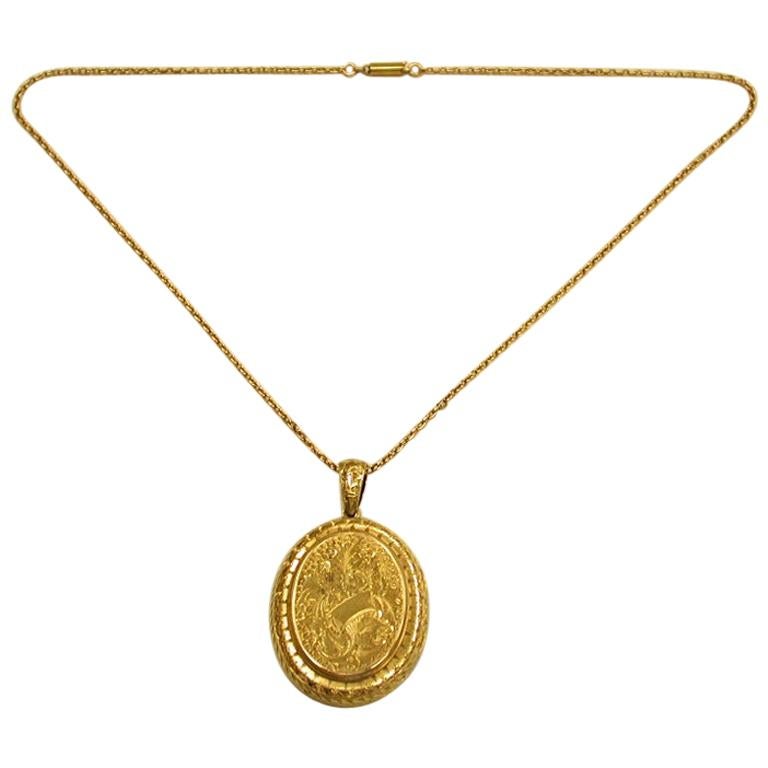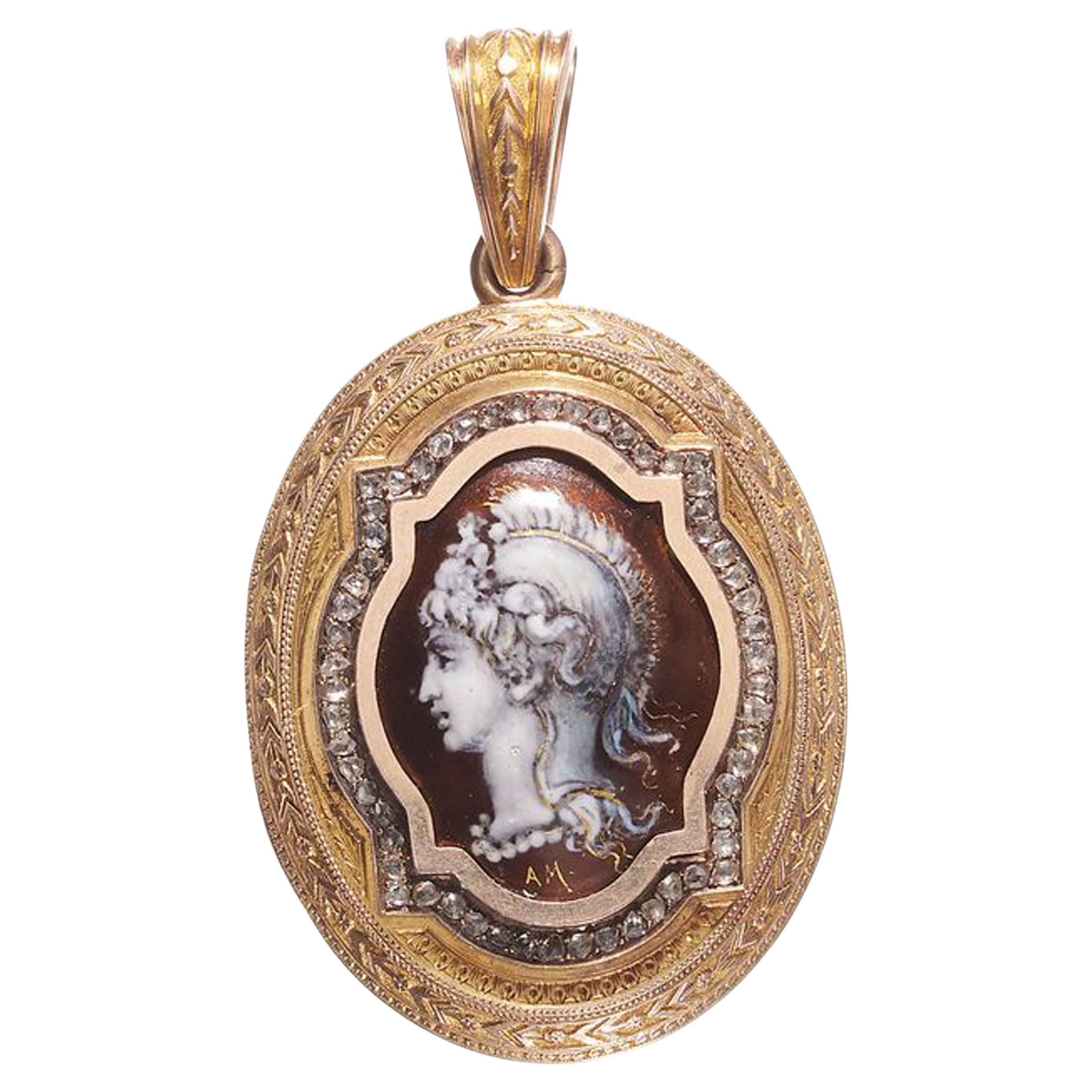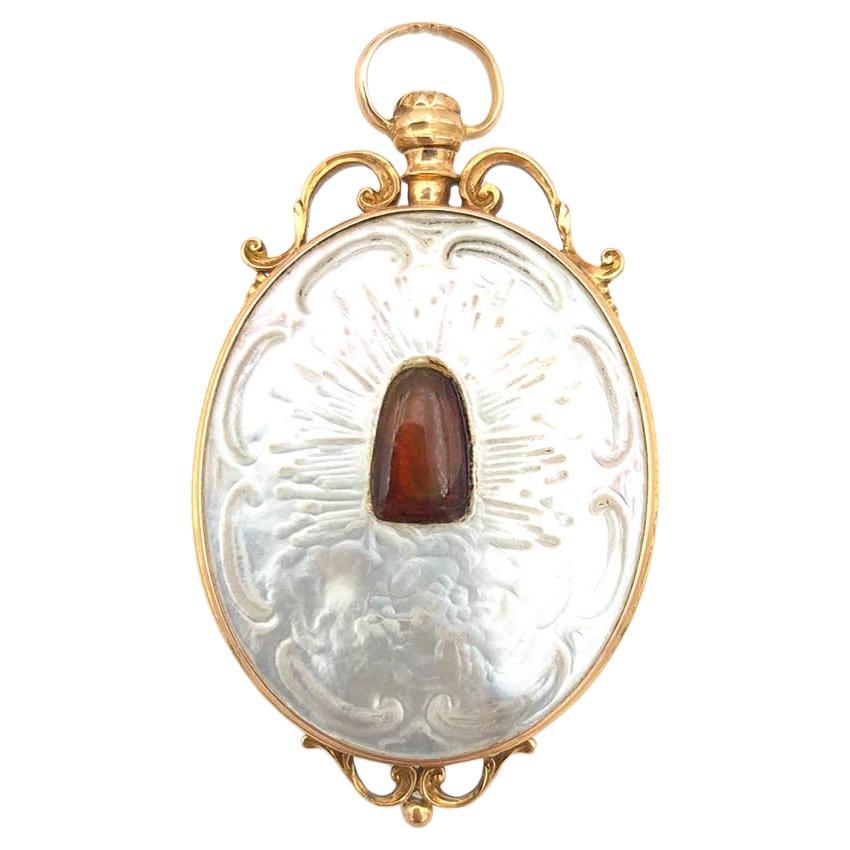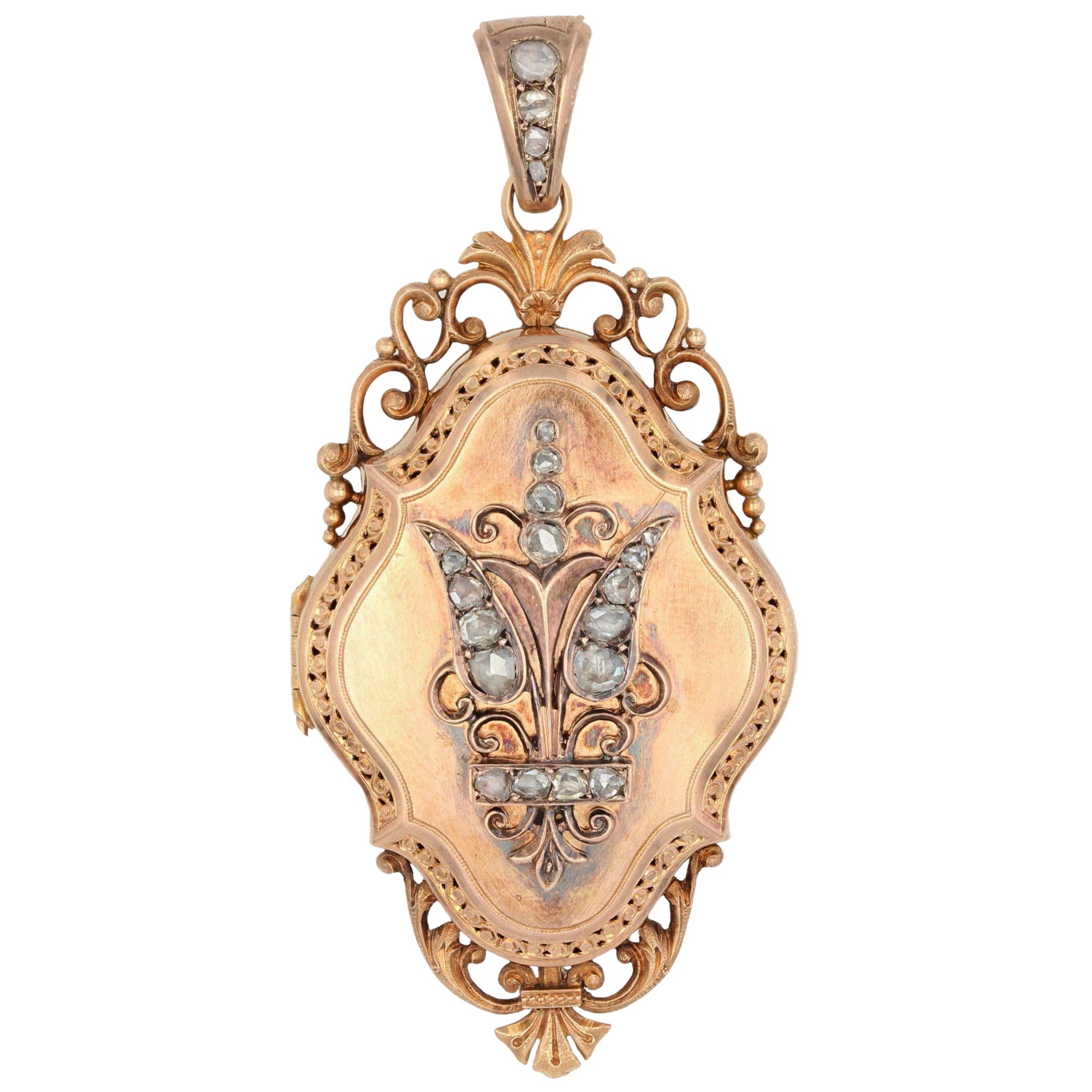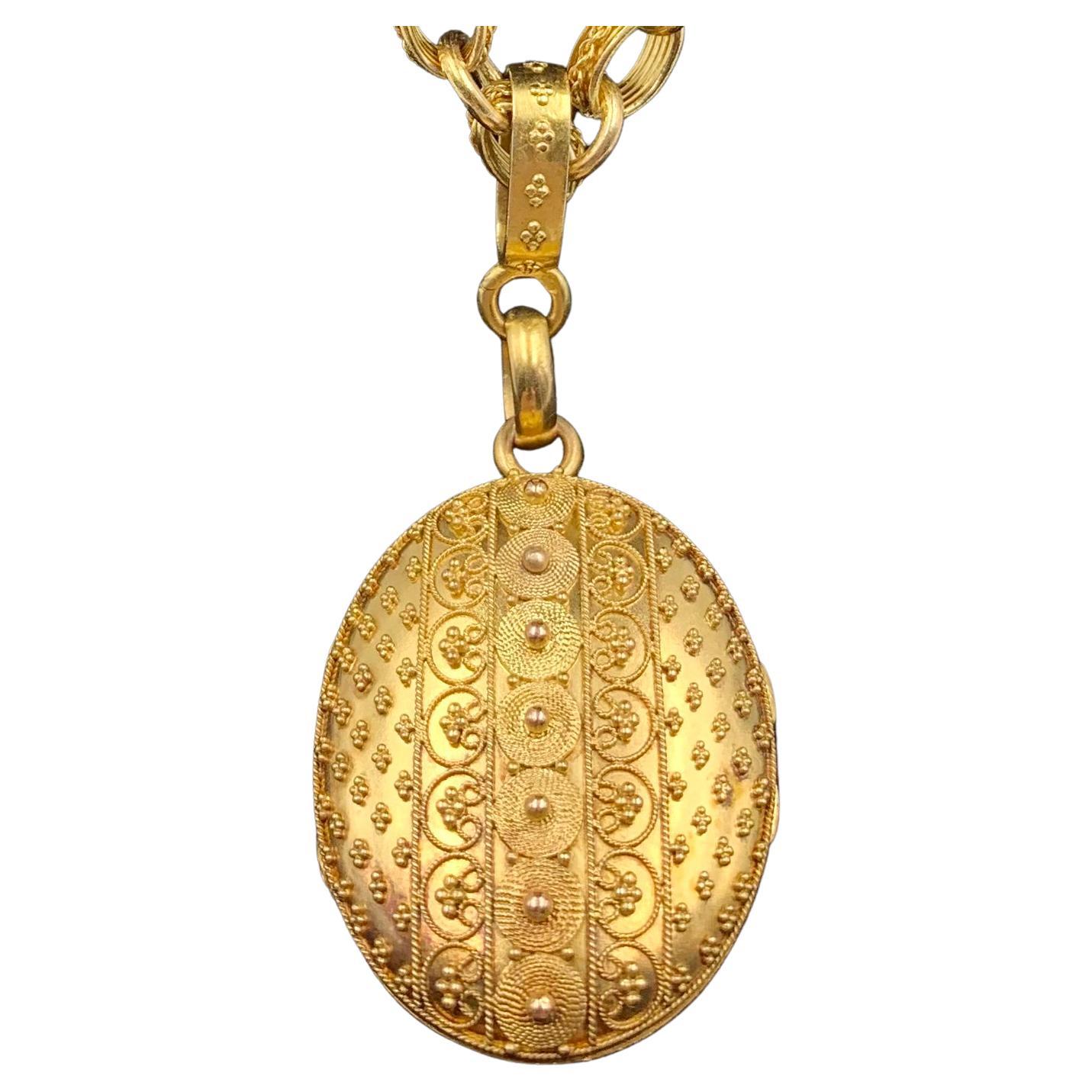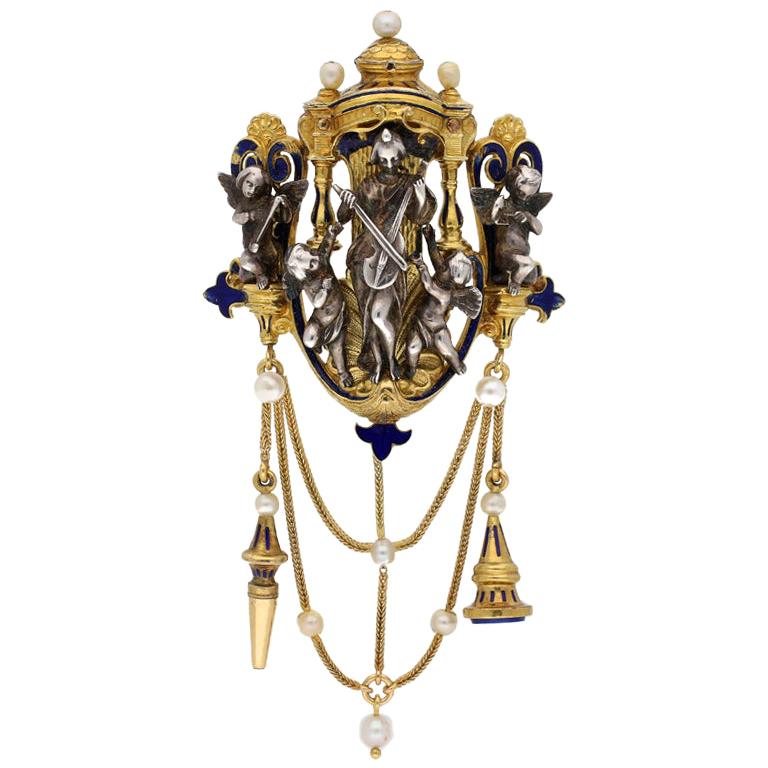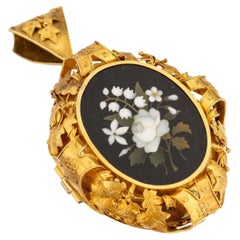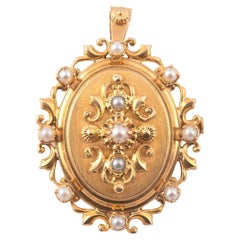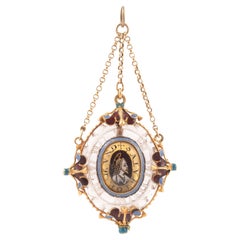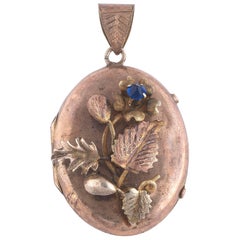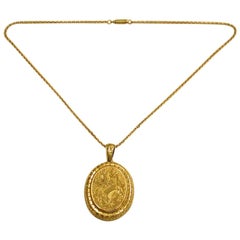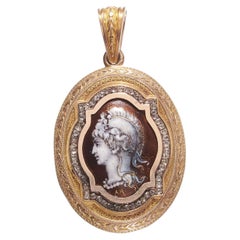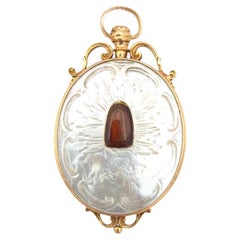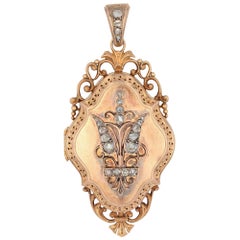Items Similar to Pectoral Gold Pendant Attributed To Castellani With A Cameo Pope Pio IX
Want more images or videos?
Request additional images or videos from the seller
1 of 5
Pectoral Gold Pendant Attributed To Castellani With A Cameo Pope Pio IX
$41,751.90
£30,867.72
€35,000
CA$57,429.11
A$63,836.02
CHF 33,461.47
MX$779,592.23
NOK 417,747.17
SEK 393,022.16
DKK 266,454.42
About the Item
PECTORAL GOLD PENDANT FROM CASTELLANI WITH A CAMEO ATTRIBUTED TO Luigi Pichler 1773 - 1854 SHOWING POPE PIO IX'S EFFEGY
Pendente in oro inciso e in filigrana attribuito a Castellani, con al centro un cammeo in agata raffigurante Sua Santità Papa Pio IX, circondato da una fila di pietre incolore e ghirlande stilizzate a rilievo, reca sul retro inciso lo stemma della famiglia Mastai Ferretti a cui apparteneva sua Santità, mm 90X68, gr 105. Corredato di cartiglio in cui viene riportato come segue: "regalato da S. Santità Pio IX alla Contessa Giulia Guicciardini Pucci, nell'occasione della sosta che fece Santità Sua il 18 Agosto 1857 nella Villa Guicciardini a Montughi."
L’angelico Pio IX è finalmente in mezzo a noi, fra le mura della bella Firenze, e nella capitale della gentile Toscana. Chi non sente il cuore inondato di gioia, l’animo ripieno di ineffabile contentezza al faustissimo avvenimento? O giorno felice in cui è dato di potere ammirare ed ossequiare il venerando Pontefice”.”
Così le cronache del tempo annunciavano la visita di Papa Pio IX a Firenze durante l’estate del 1857.
Testimonianze storiche confermano che Il 18 Agosto di quell’anno verso mezzogiorno e un quarto il corteo papale giunse a Villa Guicciardini, presso “La Pietra”, a Montughi, alle porte di Firenze. Dopo un breve riposo Pio IX pranzò con il Granduca di toscana e gli Arciduchi, col suo seguito di nobili signori.
Nelle memorie della Contessa Giulia Pucci Guicciardini, conservate nell’archivio storico Guicciardini di Poppiano (Montespertoli, Firenze), risulta che durante la sua visita presso il Castello di Poppiano, Sua Santità Papa Pio IX abbia lasciato un medaglione con pietre dure e preziose, insieme alla brocca e al bacile utilizzati per la messa (purtroppo trafugati dal palazzo di famiglia del Lungarno nel 1944, dove si conservava anche la poltrona in velluto rosso usata dal pontefice).
Please Note : the object is not available for export outside Italy.
- Creator:
- Metal:
- Weight:105 g
- Place of Origin:
- Period:
- Date of Manufacture:1850’s
- Condition:
- Seller Location:Firenze, IT
- Reference Number:1stDibs: LU12024993692
About the Seller
4.9
Recognized Seller
These prestigious sellers are industry leaders and represent the highest echelon for item quality and design.
Platinum Seller
Premium sellers with a 4.7+ rating and 24-hour response times
Established in 1890
1stDibs seller since 2010
926 sales on 1stDibs
Typical response time: <1 hour
- ShippingRetrieving quote...Shipping from: Firenze, Italy
- Return Policy
Authenticity Guarantee
In the unlikely event there’s an issue with an item’s authenticity, contact us within 1 year for a full refund. DetailsMoney-Back Guarantee
If your item is not as described, is damaged in transit, or does not arrive, contact us within 7 days for a full refund. Details24-Hour Cancellation
You have a 24-hour grace period in which to reconsider your purchase, with no questions asked.Vetted Professional Sellers
Our world-class sellers must adhere to strict standards for service and quality, maintaining the integrity of our listings.Price-Match Guarantee
If you find that a seller listed the same item for a lower price elsewhere, we’ll match it.Trusted Global Delivery
Our best-in-class carrier network provides specialized shipping options worldwide, including custom delivery.More From This Seller
View AllArchaeological Revival Gold And Micromosaic Brooch/Pendant 1860's
By Cesare Roccheggiani
Located in Firenze, IT
18 kt gold micro mosaic-pendant, approx. 1860, circumferential wine leaves, centered oval micro mosaic on black ground, floral presentation, also wearable as a brooch, lug removable....
Category
Antique 1860s Italian Etruscan Revival Pendant Necklaces
Materials
Gold, 18k Gold
Pearl and Yellow Gold Pendent/Brooch
Located in Firenze, IT
Pendent-Brooch composed of an oval decorated with interlacing punctuated with white pearls. 18K yellow gold frame. French work. Dimensions: 3.30 x 3.00 cm. Gross weight: 7.53 g.
Category
Antique 1870s French Napoleon III Brooches
Materials
Pearl, 18k Gold, Yellow Gold
Italian Renaissance Early 17th Century Rock Crystal & Enemal Devotional Pendant
Located in Firenze, IT
In 18kt yellow gold with a triple chain suspending a carved rock crystal medallion surrounded by polychrome enamels which holds on one side a Salvator Mundi in enamels and on the oth...
Category
Antique Early 17th Century Italian Renaissance Pendant Necklaces
Materials
Rock Crystal, 18k Gold, Yellow Gold
Mid-19th Century Neapolitan Gold Locket Portrait Holder Oval Pendant
Located in Firenze, IT
Decorated with flowers and branches and colored stone, weight 6,7 gr.
Category
Antique 1850s Italian Victorian Drop Necklaces
Materials
Gold
Large Archaeological-Revival Gold And Roman Intaglio Pendant Italy Circa 1870's
Located in Firenze, IT
Large oval shape archaeological-revival in high karat gold with five roman intaglio 1st century depicting two roman profile, wolf, lion and philosopher.
Size 56mm x 49mm
Weight: 21.5gr.
Category
Antique 1870s Italian Etruscan Revival Pendant Necklaces
Materials
Agate, Gold, 22k Gold
1820s Hardstone Cameo Diamond Gold Pendant
Located in Firenze, IT
The carved stone agate cameo depicting a female bust, measuring approximately 43.0 by 30.5 by 16.0 mm (with the frame 65 by 45 mm).
Framed by an oval 18Kt gold mounting with 4 roun...
Category
Antique 1820s Georgian Drop Necklaces
Materials
Agate, Diamond, 18k Gold, Gold
You May Also Like
Antique Victorian 15 Carat Gold Locket and Chain Dated, circa 1880
Located in London, GB
Antique Victorian 15ct Gold Locket & Chain Dated Circa 1880
The locket is beautifully engraved with different scenes on both sides.
The front side has floral and leaf engraving with ...
Category
Antique 1880s British Victorian Pendant Necklaces
Materials
15k Gold
Antique Enamel Diamond and Gold Locket Pendant Depicting Minerva, Circa 1877
Located in London, GB
An antique enamel, diamond and gold locket pendant, with a domed enamel centre plaque, depicting the goddess Minerva, in monochrome white and grey highlighted with gold, on a brown b...
Category
Antique 1870s American Victorian Pendant Necklaces
Materials
Diamond, Gold, Enamel
Antique reliquary locket pendant 18th century in 18k gold
Located in PARIS, FR
Antique reliquary locket pendant 18th century in 18 karat rose gold. On one side, the pendant is decorated with a miniature on vellum depicting Saint ...
Category
Antique 1790s Italian Georgian Pendant Necklaces
Materials
18k Gold
French 19th Century Diamonds 18 Karat Rose Gold Locket Pendant
Located in Poitiers, FR
Pendant in 18 karat rose gold, eagle head hallmark.
Important antique medallion, of rhombic form it is decorated in application of a stylized vegetable pattern decorated with rose- cut diamonds. The border is openwork with arabesque pattern. This antique rose gold pendant...
Category
Antique Late 19th Century French Napoleon III Pendant Necklaces
Materials
Diamond, White Diamond, Gold, 18k Gold, Rose Gold
Rare Etruscan Revival 18K Gold Locket Necklace attr. Eugene Fontenay, Paris 1870
By Eugene Fontenay
Located in New York, NY
Large, stunning granulated antique French Etruscan Revival locket with the original, equally spectacular large chain. The oval locket exquisitely decorated with a technique known as granulation, where a tiny gold bead is individually applied to a surface to form a geometric pattern. Done entirely by hand and requiring a master goldsmith, this technique is thought to have originated in Sumer approximately 5000 years ago. The Etruscans mastered the process in the first millennium B.C and closely guarded its secret, becoming celebrated for creating some of the most beautiful and technically advanced gold jewelry ever made.
Condition: This piece is in very good condition retaining the original interior crystal, the hinges work very well and are precisely calibrated to stay open in place when desired. The back of the locket shows normal wear with just the slightest waviness. The chain is in excellent condition.
Composed as a pendant locket on its original chain, the oval gold links reeded on the interior and applied chain link on the exterior, the oval locket decorated with twisted wirework circles and fine applied granulation patterns, suspended from a long bale with quatrefoil granulation. Hinged on the side, opening to reveal a hinged glass panel for a personal memento.
French assay mark and maker's mark partially obscured
Confident attribution to Fontenay based on partial hallmark and similar published examples.
References: Wartski for gold enamelled locket on chain necklace, sold archives; DSF for gold enamelled locket pendant of similar workmanship and design. Fontenay pieces retaining the original chain which may be worn on its own are rare and desirable.
Eugene Fontenay...
Category
Antique 19th Century French Etruscan Revival Pendant Necklaces
Materials
18k Gold, Yellow Gold
$15,000 / set
Free Shipping
Saint Cecelia Chatelaine Pendant by Froment-Meurice, French, circa 1850
By François-Désiré Froment-Meurice
Located in London, GB
Saint Cecelia chatelaine pendant by Froment-Meurice. A gold and silver pendant in the Renaissance Revival style, the main element composed of an ornately carved openwork architectural structure in the form of an altarpiece, the central niche surmounted by a cupola set with pearls, with scroll and scalloped details to the interior and suspending a fleur-de-lis, containing a figure of Saint Cecelia playing a viola da gamba with two dancing putti to either side, flanked by two smaller raised pedestals issuing fleur-de-lis, each set with a putto (one playing a harp, the other playing a triangle), suspending a double swagged gold chain set with pearls, with two further chains suspending on one side a circular lapis lazuli seal in a trumpet form mount and on the other a watch winder, the whole accented with blue enamel and set to the reverse with a hinged band loop, approximately 9.5cm in total length. Tested yellow gold and silver, French, circa 1850.
François Désiré Froment-Meurice (1802-1855) was one of the most important French jewellery and silversmiths of the nineteenth century, described by Victor Hugo as the Cellini of his age. He exhibited in a number of International Exhibitions, where Queen Victoria and Prince Albert were among his clients. The Renaissance Revival, as seen here, and the Gothic Revival were his two major decorative styles. This piece is also typical of his penchant for placing a silver figure, usually female, within a yellow gold architectural mount. The central figure and flanking putti are identical to those found on two brooches by Froment-Meurice, one in the Birmingham Museum and one in the Schmuckmuseum Pforzheim. Another brooch by Froment-Meurice, in the collection of the Victoria and Albert Museum, features a similar central figure, but this time as an angel with wings, in a silver oval blue enamelled frame. These examples also bear a similar gold and blue enamel architectural mount, and differ only in the surrounding and pendulant embellishments.
Saint Cecelia is the patroness of music, whose feast day is celebrated each November. A Roman maiden, she was amongst the earliest and most famous of the Roman martyrs, reputedly beheaded in 230 AD under the Emperor Alexander Severus. Throughout history, Saint Cecelia has inspired musicians and poets alike, appearing in John Dryden...
Category
Antique 1850s French Victorian More Necklaces
Materials
Lapis Lazuli, Natural Pearl, Yellow Gold, Silver
More Ways To Browse
Firenze Jewelry Italy
Castellani Cameo
Antique Faberge Ring
Augis Love Pendant
Belle Epoque Bow Necklace
Black Onyx Locket
Book Locket
Byzantine Cross Bronze
Cartier Trinity Pendant
Chinese Gaming Chips Mother Of Pearl
Chopard Happy Spirit
Danish Gold Chain
Georgian Garnet Necklace
Gerard Ring
Goddess Artemis
Gold Ankh
Gold Mushroom Pendant
Gold Rolex Necklace
